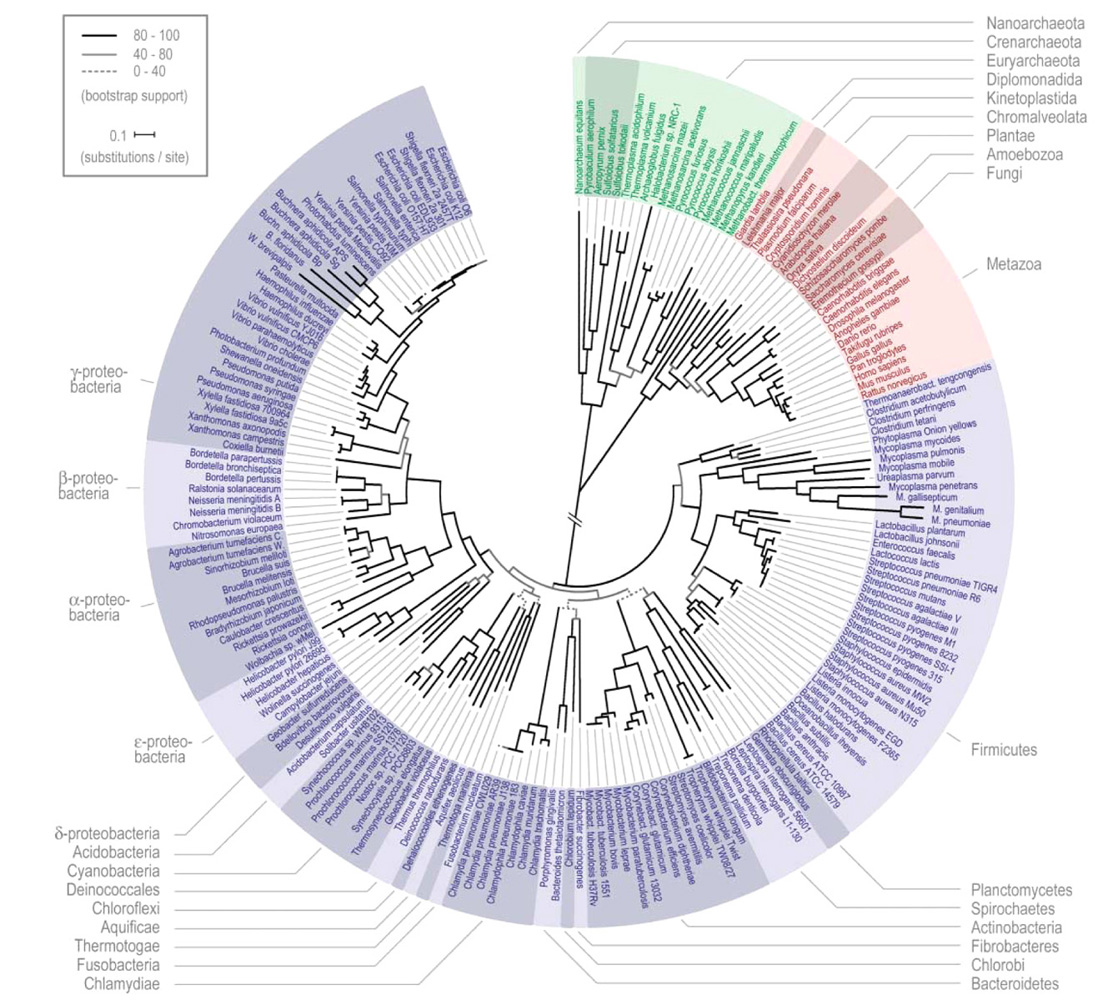Bacteria 101
Bacteria have been around for a very long time, as they are the oldest known forms of life on Earth. The earliest fossils of prokaryotes (a group of organisms that bacteria are part of) dates to over 3.5 x 109 years ago.
Bacteria have evolved into a huge variety in order to adapt to a multitude of different environments, including the human body, artic ices, hot-springs and even the bottom of the ocean.

(bacterial tree of life derived from https://itol.embl.de/itol.cgi)
How large are bacteria?
Bacteria are single-celled organisms. Bacterial cells are much smaller than human cells. Bacterial cells can measure from about 1 to 10 μm long. Most of them are only about 1 to 2 μm in diameter.

(image credit from https://courses.lumenlearning.com/microbiology/chapter/types-of-microorganisms/)